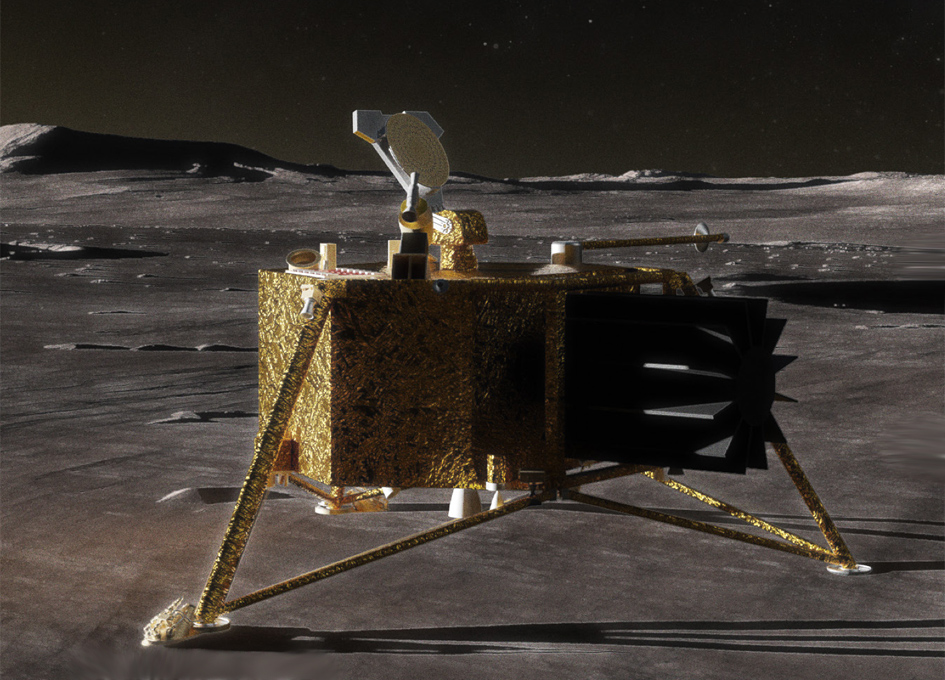Mercury Lander: Planetary Mission Concept Study for the 2023-2032 Decadal Survey

As an end-member of terrestrial planet formation, Mercury holds unique clues about the original distribution of elements in the earliest stages of solar system development and how planets and exoplanets form and evolve in close proximity to their host stars.
This Mercury Lander mission concept enables in situ surface measurements that address several fundamental science questions raised by MESSENGER’s pioneering exploration of Mercury. Such measurements are needed to understand Mercury’s unique mineralogy and geochemistry; to characterize the proportionally massive core’s structure; to measure the planet’s active and ancient magnetic fields at the surface; to investigate the processes that alter the surface and produce the exosphere; and to provide ground truth for current and future remote datasets.
NASA’s Planetary Mission Concept Studies program awarded this study to evaluate the feasibility of accomplishing transformative science through a New-Frontiers-class, landed mission to Mercury in the next decade. The resulting mission concept achieves one full Mercury year (~88 Earth days) of surface operations with an ambitious, high-heritage, landed science payload, corresponding well with the New Frontiers mission framework. The 11-instrument science payload is delivered to a landing site within Mercury’s widely distributed low-reflectance material, and addresses science goals and objectives encompassing geochemistry, geophysics, the Mercury space environment, and surface geology.
This mission concept is meant to be representative of any scientific landed mission to Mercury; alternate payload implementations and landing locations would be viable and compelling for a future landed Mercury mission.
Mercury Lander: Planetary Mission Concept Study for the 2023-2032 Decadal Survey
Carolyn M. Ernst (1), Sanae Kubota (1), Nancy Chabot (1), Rachel Klima (1), Gabe Rogers (1), Paul Byrne (2), Steven A. Hauck II (3), Kathleen E. Vander Kaaden (4), Ronald J. Vervack Jr. (1), Sebastien Besse (5), David Blewett (1), Brett Denevi (1), Sander Goossens (6), Stephen Indyk (7), Noam Izenberg (1), Catherine Johnson (8), Lauren Jozwiak (1), Haje Korth (1), Ralph McNutt Jr. (1), Scott Murchie (1), Patrick Peplowski (1), Jim Raines (9), Elizabeth Rampe (10), Michelle Thompson (11) ((1) Johns Hopkins University Applied Physics Laboratory, (2) North Carolina State University, (3) Case Western Reserve University, (4) Jacobs, NASA Johnson Space Center, (5) Aurora Technology BV for ESA, European Space Agency, (6) University of Maryland Baltimore County, (7) Honeybee Robotics, (8) Planetary Science Institute, (9) University of Michigan, (10) NASA Johnson Space Center, (11) Purdue University)
Comments: Report submitted to NASA and the Planetary Science and Astrobiology Decadal Survey
Subjects: Instrumentation and Methods for Astrophysics (astro-ph.IM); Earth and Planetary Astrophysics (astro-ph.EP)
Cite as: arXiv:2107.06795 [astro-ph.IM] (or arXiv:2107.06795v1 [astro-ph.IM] for this version)
Submission history
From: Carolyn Ernst
[v1] Wed, 14 Jul 2021 15:52:14 UTC (8,311 KB)
https://arxiv.org/abs/2107.06795









